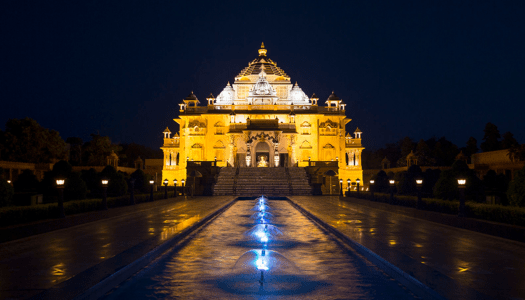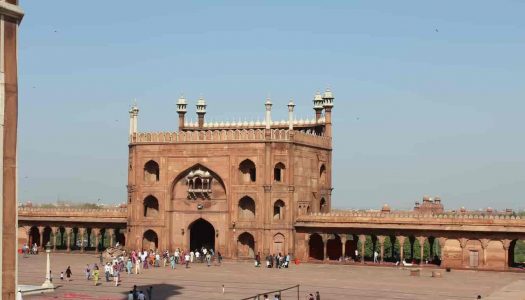The grandeur of Jama Masjid transforms Delhi into a breathtaking destination. Known for its architectural grandeur, Jama Masjid is an important mosque in the city. It is also one of the largest mosques in the country thereby attracting devotees from all over the globe. It was constructed in the 17th century redefining the glory of Delhi. Today, it stands as an important structure of cultural heritage and religious inclusivity.
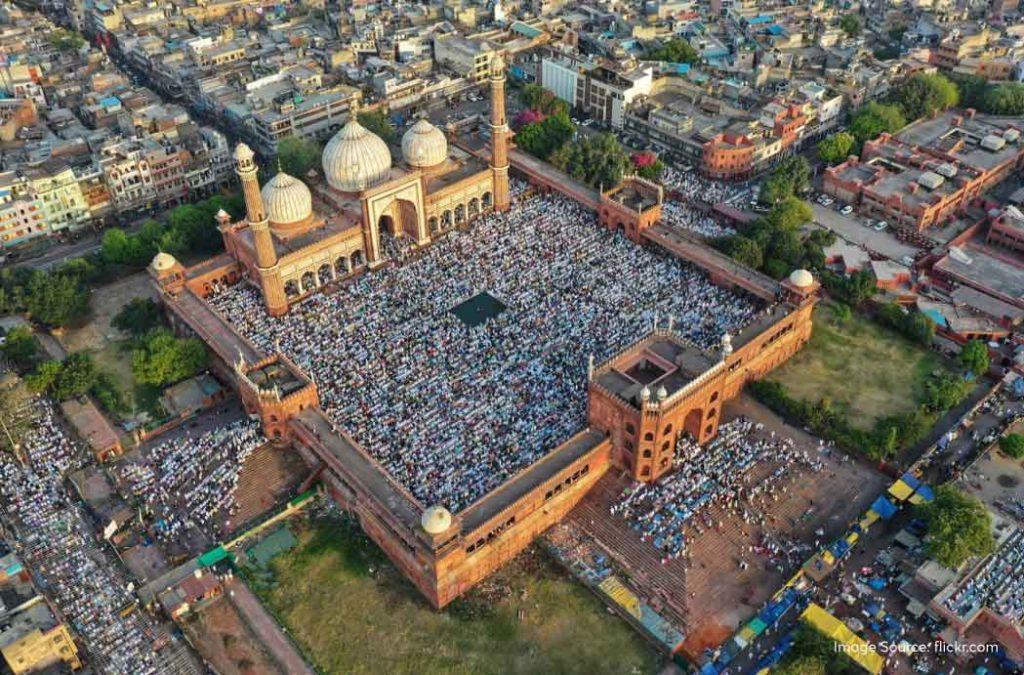
The magnificent red structure made with sandstone is not just a place of beauty. It combines the essence of spirituality and tranquillity. As devotees gather on important days, the mosque turns into a massive place of abundant prayers. The symmetrical layout echoes the rhythmic prayers and that’s how you know that you are in Delhi!
Historical Context
Jama Masjid is an architectural marvel in the heart of New Delhi. The structure was built by Emperor Shah Jahan who was also famously known for the construction of the Taj Mahal. The work began in the year 1644 and took around 12 years for its completion. Nearly 5000 workers were a part of this creation. It was administered by Saadullah Khan, the then-prime minister of Shah Jahan. 1 million rupees were used for the massive construction.
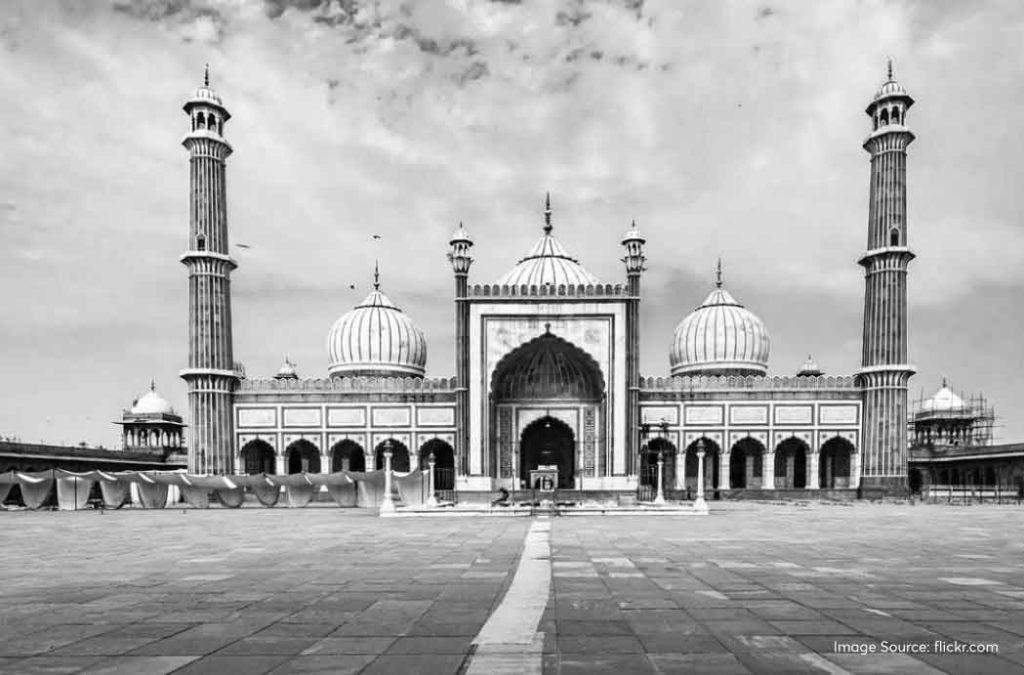
The structure came to life in 1656 when it was finally ready for the public. It was inaugurated on 23 July 1656. The inauguration ceremony was performed by Syed Abdul Ghafoor Shah Bukhari from Uzbekistan. He was specially invited to be the Royal Imam of Shah Jahan.
It is important to note that Jama Masjid was the last construction of Shah Jahan. Later, it became a place of worship for emperors and important people. Apart from being a mosque, it was also a politically important place to redefine the Mughal rule in Delhi. It witnessed a change of rules, a lack of power and a lot more.
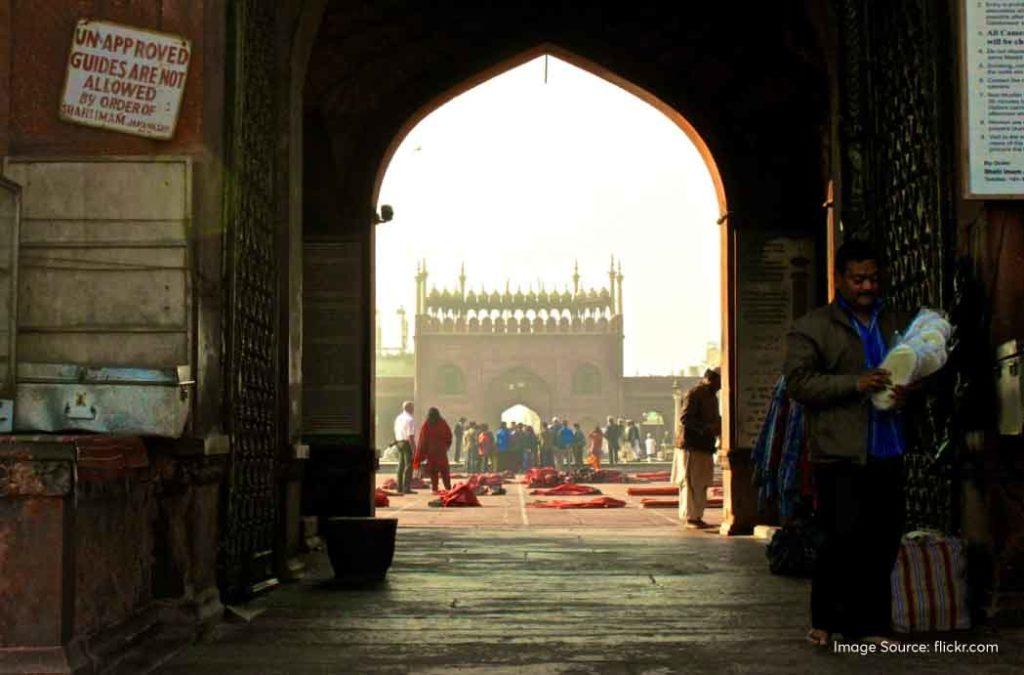
Initially, the British favoured the citizens which only changed after the 1857 revolt where many British officials lost their lives. The British assumed Muslims to be responsible for the revolt. It led to the requisition of Jama Masjid which was considered for destruction. However, the British used the space for European and Sikh soldiers.
In 1862, the Jama Masjid was again returned to the Muslim community considering their resentment. While the Masjid was no longer a political place for gathering, it was still an important structure for Muslims. Mughal rule was destroyed but the mosque stood strong similar to the resilience of the people. Interestingly, many Nawabs contributed to its repair and restoration work. The Nawab of Rampur donated INR 155,000 and the Nizam of Hyderabad donated INR 100,000.
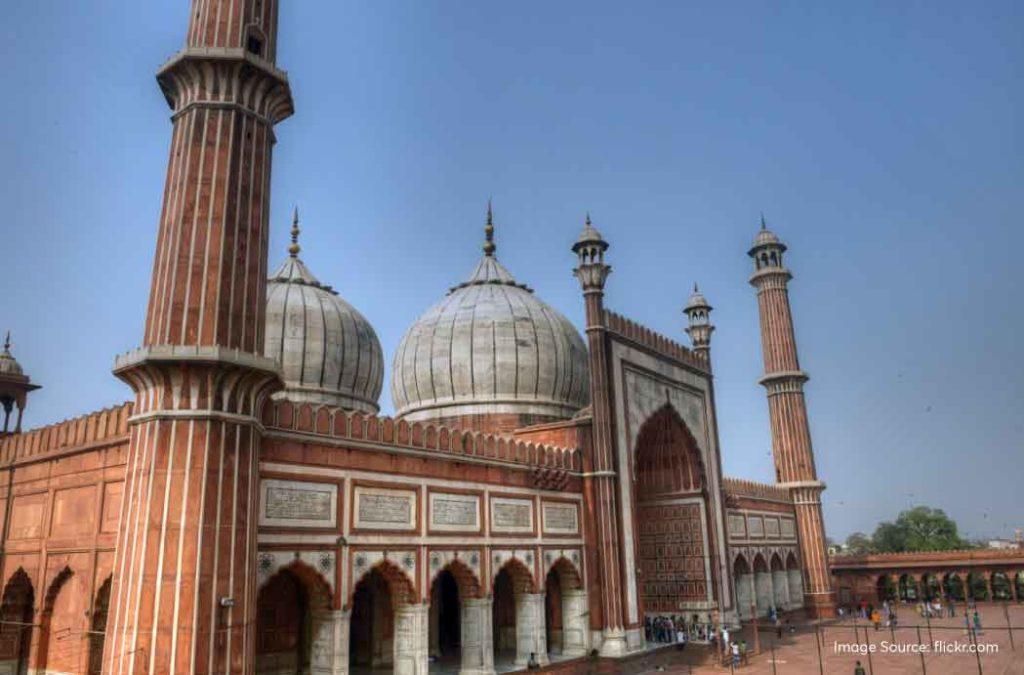
After Jama Masjid was finally given back its religious significance, Indians often utilised the space for political discussions. While the British knew this, they could not do much considering the laws. Interestingly, Hindus and Muslims gathered in Jama Masjid to express their solidarity for anti-colonialism in India despite the tension between the communities. Now, that is something beautiful in the history of the country!
After witnessing the beautiful place of worship, you can also visit the Lotus Temple. Welcoming people from all faiths, the temple offers a memorable experience.
Jama Masjid: An architectural marvel
Jama Masjid was originally a part of the city named Shahjahanabad. Being one of the largest mosques in Delhi as well as the Indian subcontinent, its construction was excellently special. While its exteriors reflect the Jama Masjid of Fatehpur Sikri, the interiors are inspired by the Jama Masjid of Agra. Interestingly, the workforce was a mix of Europeans, Turks, Indians, Persians and Arabs. Situated on a hilltop, it is slightly elevated from the rest of the landmarks in the city.
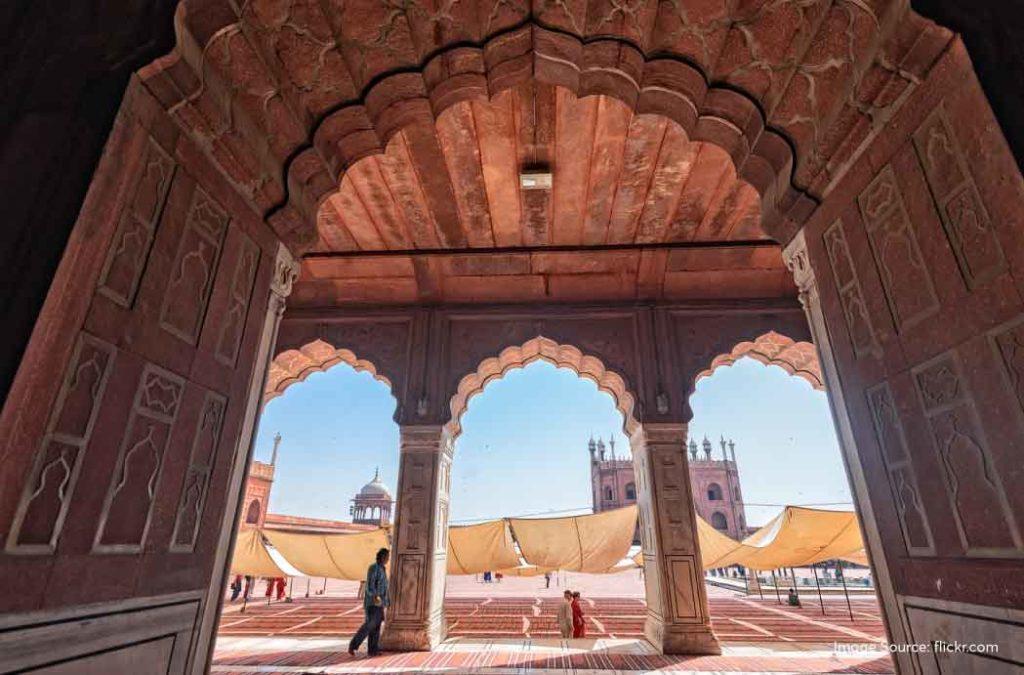
As you enter the mosque, you can witness three massive entryways. The sandstone gates have a story to tell! Initially, the eastern gate was reserved for the emperor and other royals. The other two gates were open to the public. These gates also have dedicated stairways.
Moving ahead, you can watch a massive courtyard depicting its true charm and opulence. The courtyard sets the mosque apart as it is huge yet so beautiful. The capacity of the courtyard is nearly 25,000 visitors. Moreover, you get to see the architectural beauty of the mosque right from the courtyard.
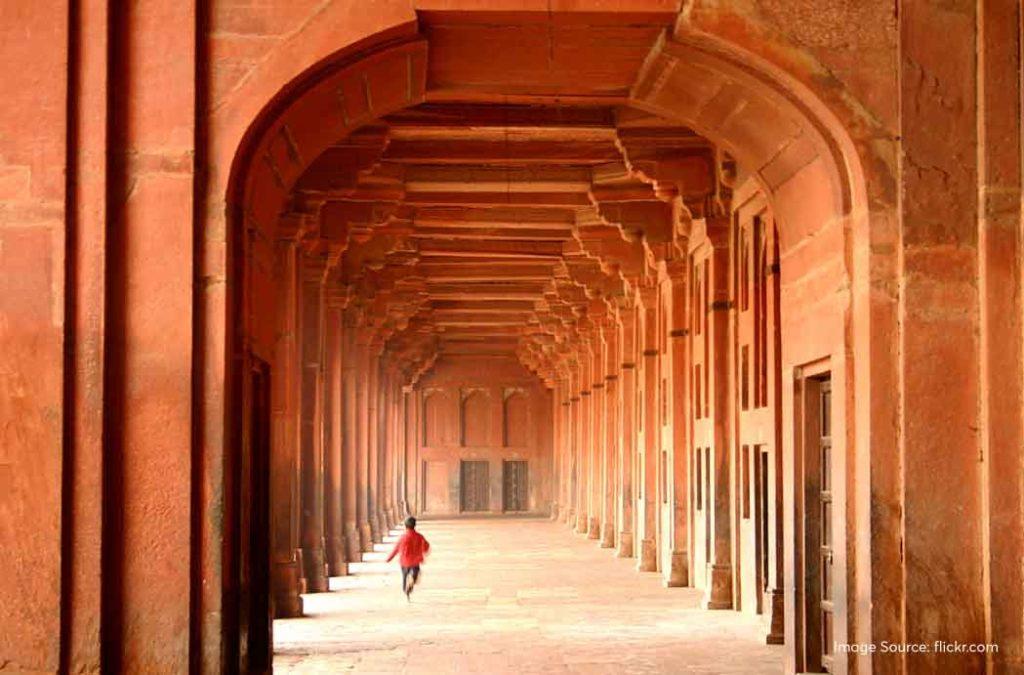
Jama Masjid also has an enormous prayer hall. The prayer hall houses a pishtaq (a rectangular frame) in the centre. There are many archways inside the hall adorned with calligraphic pieces. You can then see seven different mihrabs (walls where devotees face to offer their prayers). Such a tranquil design and interior work only talk highly of the divinity of this place of worship.
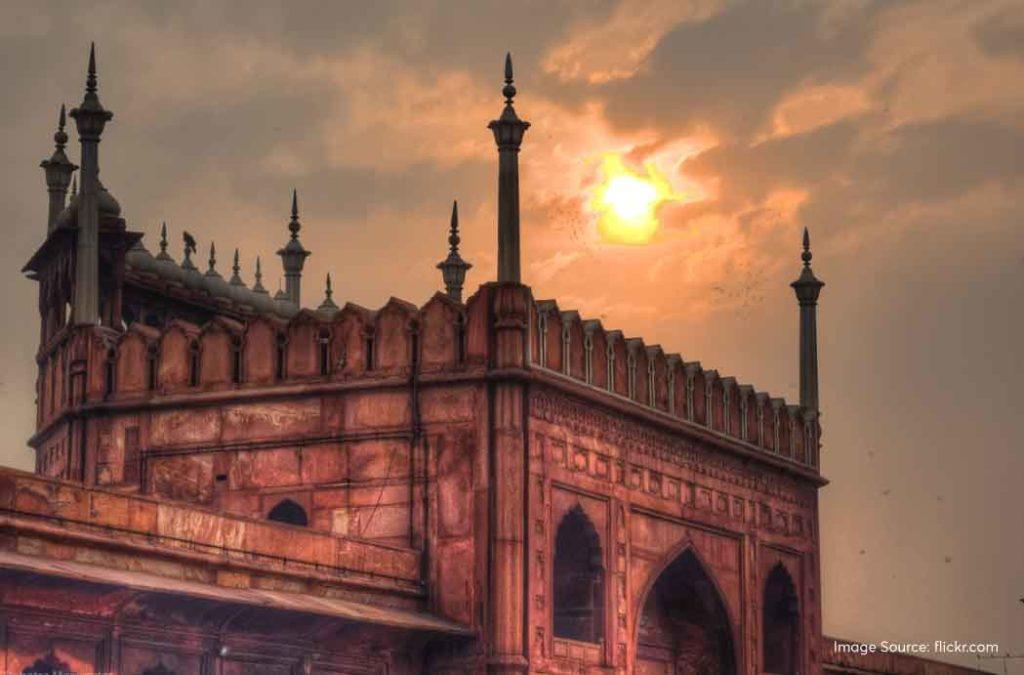
Interestingly, the structure also has two minarets in the corners. They are 40 metres high and surely a part of touristy photographs. These minarest have 130 steps each and there are three places where you can visit the viewing galleries. Marble Chhatris adore the structure making it an authentic Islamic architecture.
You can get super hungry after exploring the nooks and corners of the Masjid. That’s when you can fill your stomach with the best street food in Delhi ranging from yummy momos to authentic North Indian thalis.
Visitor Experience: Timings, Entry Fee, Tips and Best Time to Visit
Timings
The timings for Jama Masjid are 7:00 AM to 12:00 PM and 1:30 AM to 6:30 PM. However, timings might differ on the occasion of Eid or other celebrations. The timings can also change considering the prayer hours.
Entry Fee
The entry fee for the Jama Masjid is absolutely free. Do not pay any amount to people outside the mosque who may ask for an entry fee. The entry fee for photography is INR 300. The entry fee for the minaret is INR 70. You must take that amazing experience as you get to view the city from the top! It is indeed one of the best things to do at Jama Masjid.
Essential Tips
Before visiting Jama Masjid, it is important to know the rules and regulations. It only helps to enrich your experience and take home happy memories.
- It is best to dress conservatively and cover your body well. Shorts, skirts or sleeveless dresses are not allowed inside the holy mosque.
- You can also rent the robes from outside the northern gate.
- Do not shoot videos or make reels as it is a place of divinity and devotees have an emotional connection with it.
- Do not click pictures with hand features pointing towards the mosque and other gestures. It may be disrespectful to the devotees around.
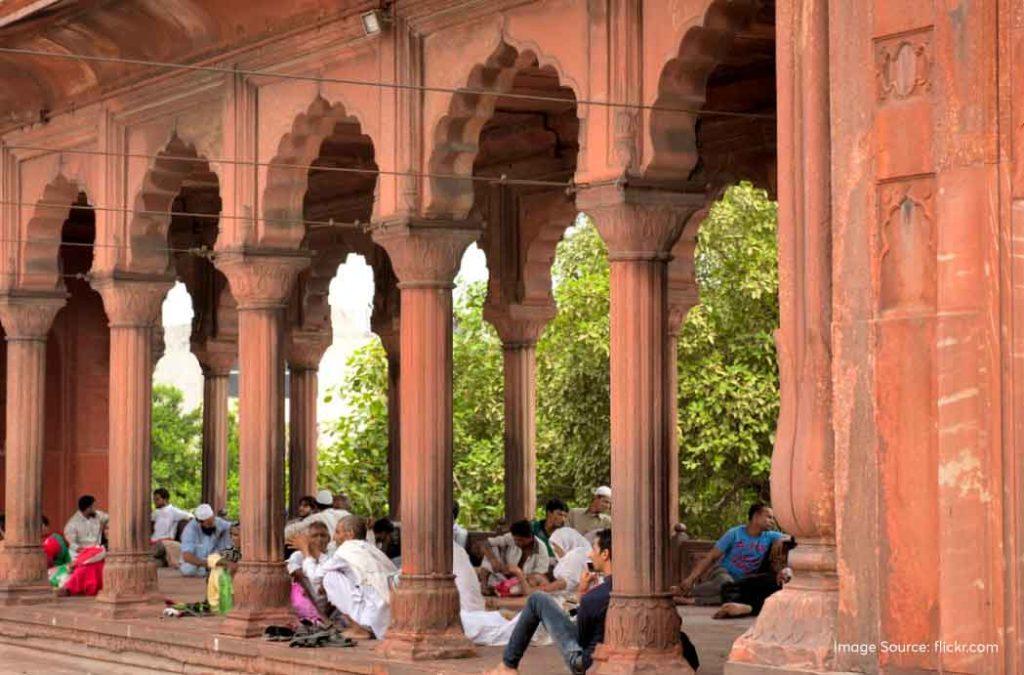
- Non-muslims are not allowed during the prayer (Namaz) time.
- Leave your footwear outside the mosque as it is strictly prohibited.
- It is best to understand the sentiments of the devotees without arguing over the generic rules followed here.
- Be aware of pickpockets and take care of your valuable belongings.
Best time to visit Jama Masjid
The best time to visit Jama Masjid is during the winter season when the weather is pleasant. It can be super sunny during the noontime and it is best to avoid the extreme heat. Moreover, you can also visit during the monsoon season as the place turns into a visionary delight.
Cultural and Religious Significance
Jama Masjid binds the people of Delhi as Muslims gather to offer their prayers. It is not just a place of worship. It is a sentiment for thousands of Muslims who find solace here. Additionally, the place sees no discrimination and everyone is treated equally.
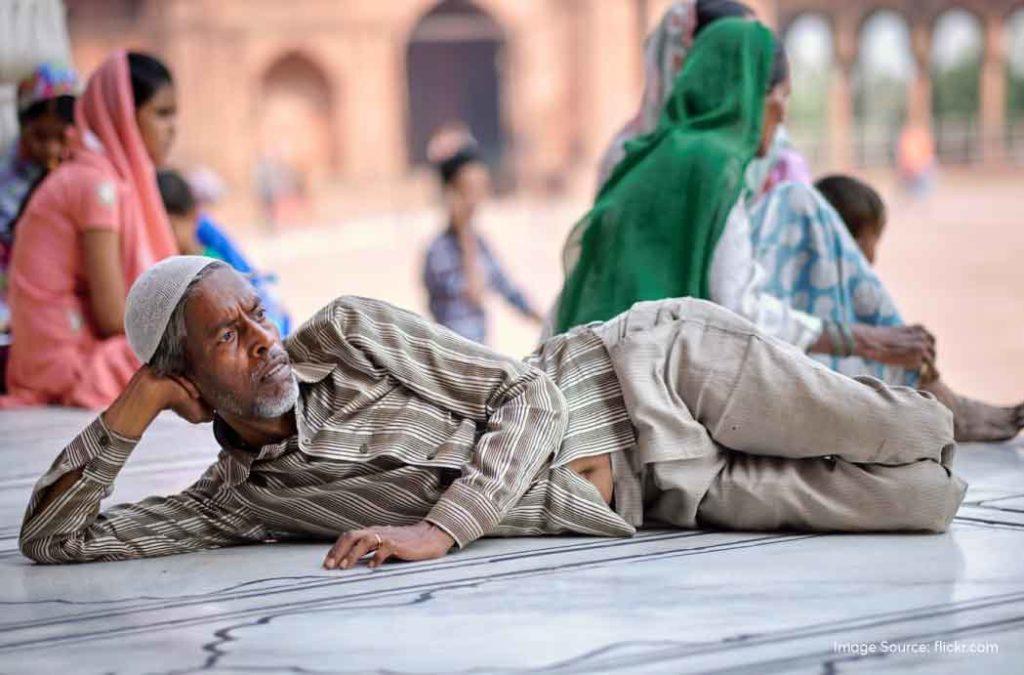
Whether you are a tourist or a local, the mosque welcomes you with equal love and respect. It comes alive during Eid-ul-Fitr and Eid-al-Adha. Both days witness thousands of Muslims who gather to offer Namaz. The rhythmic chants of the prayers awaken the city with divinity. It sure is a place of ultimate connection with the Prophet.
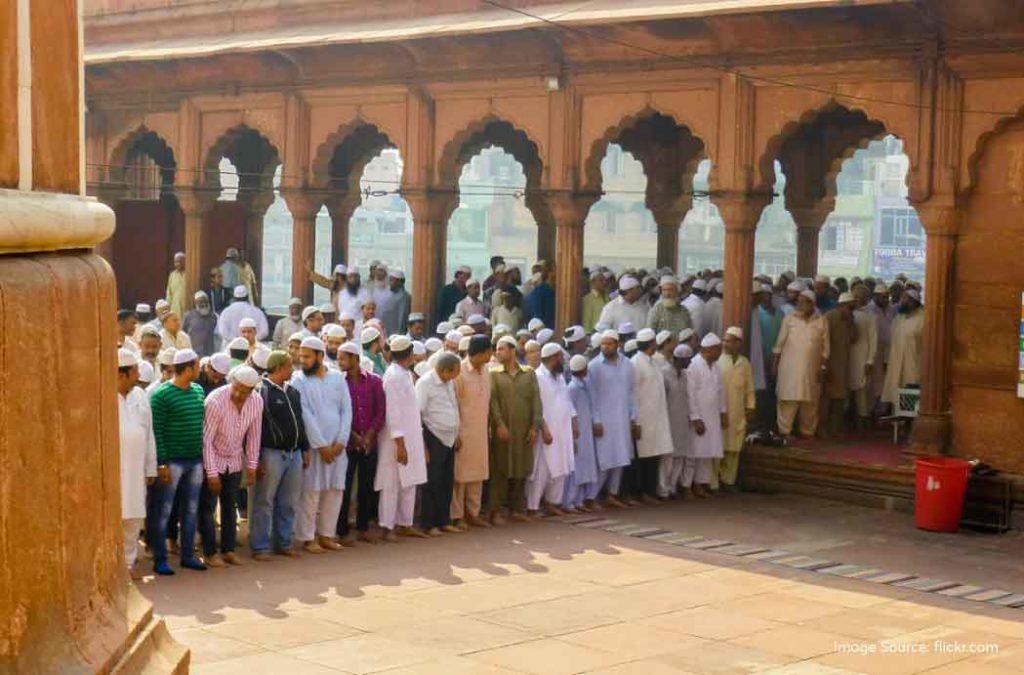
There’s something special at the Jama Masjid! You can see a cabinet located in the northern gate. It houses a significant collection of relics of Muhammad. It has the holy book of the Quran written on the skin of a deer, the sandals of the Prophet, the hair of his red beard and his divine footprints on a rock.
Location and Accessibility
Jama Masjid is located in the heart of Old Delhi thereby making it super accessible for visitors. Even tourists can easily navigate through the pathways to reach this iconic monument of beauty and grace.
- Indira Gandhi International Airport is the nearest airport which is 22.1 kilometres from the masjid.
- Old Delhi Railway Station is the nearest railway line to the mosque. It is at a distance of approximately 2.6 kilometres.
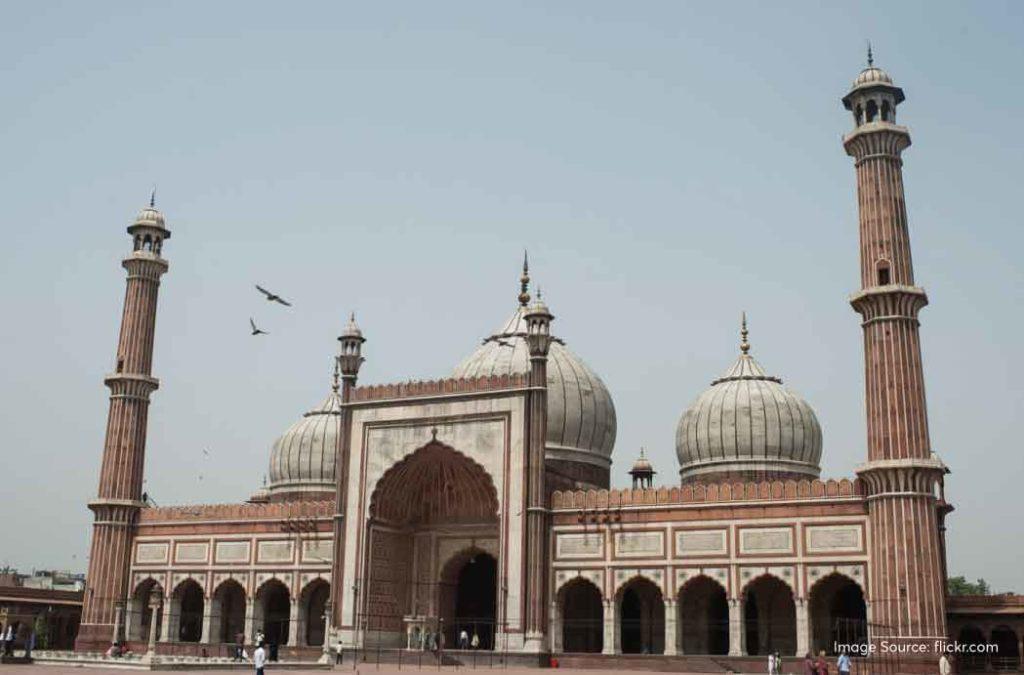
- Jama Masjid Metro Station and Chawri Bazar Metro Station are 750 metres and 850 metres respectively from Jama Masjid.
- If you are travelling by road, you can easily take a cab or auto-rickshaw. You can also travel via public transport buses.
Delhi is also home to beautiful parks and places of absolute wonder. It is best to spend a leisurely evening with your loved ones.
Conclusion
Jama Masjid serves as one of the religious places for community gatherings and Islamic worship. Moreover, the architectural grandeur attracts thousands of tourists every year. The mosque stands as a testament to time as it witnessed structural and powerful changes in history. In today’s time, Jama Masjid stands strong redefining the heritage preservation and the final architectural victory of Shah Jahan.
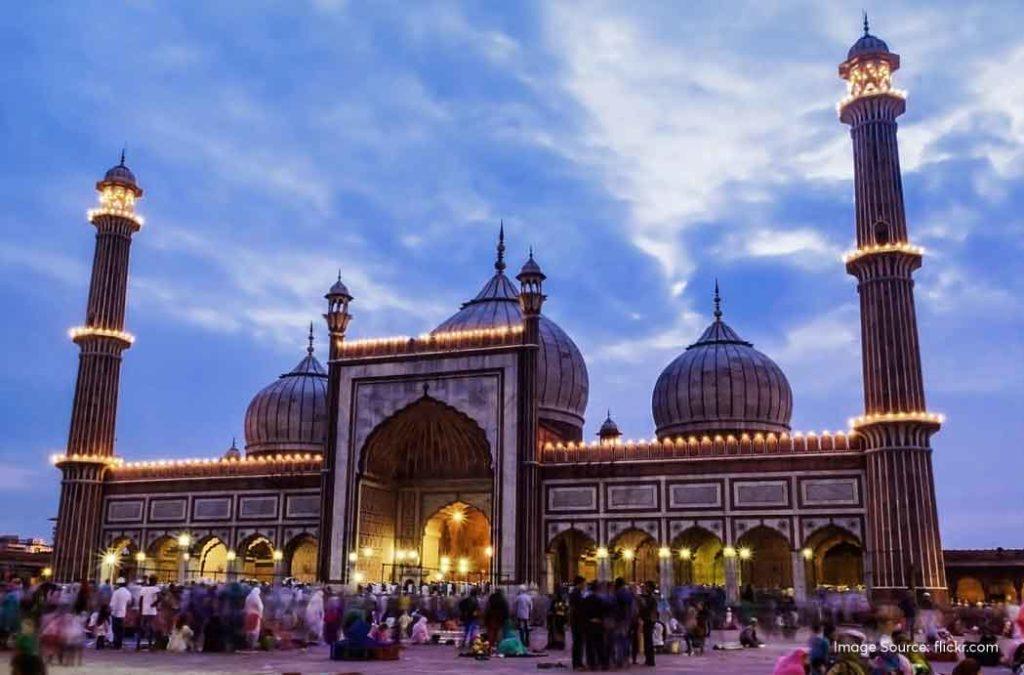
Whether you love art, history or want to discover more about the religion, Jama Masjid is the place to be! Surrounded by narrow streets and buzzing markets, the mosque is a homely place for many here. As you plan to visit the holy place, know that getting affordable hotels in Delhi is now easy. So, book your tickets and immerse yourself in the artistic expressions of the place.








